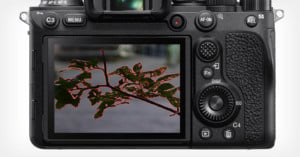
Symmetry in Photography: A Basic Guide for Better Compositions
Wherever you are right now, take a moment to look around. What patterns and shapes do you see? What objects, scenes, buildings, or other designs just look like they “make sense?”
Justin is a photographer, photography instructor, musician, and student based in Boulder, Colorado. He studies biology and visual art at CU Boulder and he is president of the CU Boulder Photography Club. He teaches a photography summer camp for youth and loves to photograph his beehives in his free time. In school, he is working toward combining his interests in art, science, and education in a future professional field.

Wherever you are right now, take a moment to look around. What patterns and shapes do you see? What objects, scenes, buildings, or other designs just look like they “make sense?”

With the recent excitement surrounding the release of the film Oppenheimer, there have been lengthy discussions about the best way to watch it – mostly because of something called an aspect ratio and the way that it affects the viewing experience. This is a term that is used widely in film, and it’s just as important for photographers to understand.

Many photographers will say that your camera lens is as important (or even more important) than your camera body. All of the light that your camera body captures has to go through some sort of lens, which affects sharpness, distortion, amount of light, perspective, and many other variables.

Although many photographers approach it in different ways, understanding white balance is a key to getting better at photography. Like other camera settings, it’s possible to have your camera set white balance automatically, but it doesn’t always produce the best results.

One of the most common errors when using Adobe Photoshop has to do with Photoshop not being able to start or complete a command because “the scratch disks are full.”

When it was first introduced, many people sharply believed that autofocus would never have a clear place in the photography industry, puns intended. Why have a machine guess where to focus when you can just turn the focusing ring yourself? Today, autofocus systems are among the primary selling points for new camera and lens technology.

There’s a reason why my iPhone is often the only camera I’ll carry with me. Its imaging quality allows me to take good photos without having to carry any additional gear.

Printing your photography is a great way to display it, give it as a gift, and experiment with different ways to present your work. One aspect of printing that will inevitably come up is the type of paper that you want to print on -- should you choose glossy or matte?

Great portrait photography is so much more than just about knowing how to work a camera. You can memorize your camera’s entire manual and still not be confident in a portrait shoot because most portraits require posing. Luckily, this is the right place to learn how to pose and become a better portrait photographer.

When compared to the other components of the exposure triangle (shutter speed and aperture), ISO appears to be the most intuitive on the surface. It is also the most misunderstood component, and everything from its definition to its usage has been discussed extensively.

As perhaps the most important parameter to understand in photography, shutter speed should be one of your first considerations when making a photograph. It’s one of the biggest reasons that photographers might find themselves unhappy with their shots, and having a great understanding of it is crucial to making great images.

If it seems like there’s more new photography technology than what you can keep up with, you are probably correct. However, don’t let that deter you from learning the industry standards and terms within it. One of those terms that you’ll likely come across is the digital single-lens reflex (DSLR) camera, which has been the leading type of camera for still photography throughout the past decade.

Aperture can seem like one of the most challenging camera settings to fully understand, but once you understand it, your photography will improve immensely.

There is a constant push for faster and lighter technology across different industries, including laptops, smartphones, drones, cameras, and more. In the photography world specifically, mirrorless cameras have appeared on top of the race to overtake DSLR cameras as the industry standard camera for still photography.

When using manual focus, it’s difficult to tell exactly where your plane of focus is. It’s possible to make a guess using your eye, but you can still be slightly off and end up with an image that is out of focus. Similar to how histograms take the guesswork out of exposure, focus peaking uses an algorithm and a simple visual aid to help take the guesswork out of manually focusing your lens.

In the digital age, there’s a lot more to a photograph than the image itself. When most digital cameras capture an image, they record certain parameters and write them in the image’s file for later use. These parameters are called metadata and are stored as Exchangeable Image File data, or EXIF for short.

If you didn’t believe your grade school math teachers when they said you’d use graphs in the real world, you’re about to. In photography, histograms can seem intimidating, but they are incredibly useful tools that are much easier to understand than they appear. Learning about histograms will help you understand exposure, post-processing, and the overall structure of a photograph.

If you’ve been outside during a nice sunrise or sunset, chances are good you’ve heard the term “golden hour.” It’s one of the best times to do many types of photography and a beautiful time to be outside. This guide will help you understand golden hour, when it happens, and how to make the most of it through various types of photography.

Realizing that your lens was dirty during a shoot is not a great feeling. While some specks of dust and other consequences of a dirty lens can be fixed via spot healing and other post-processing, it’s much easier to make sure your lens is clean to begin with and save editing time. Plus, attention to the state of your lens will help it retain its value over time and increase its longevity.

When you hear “long exposure,” you probably think of a shutter speed that’s too slow to hand-hold and produce a sharp image. It might be something like ¼”, or maybe as long as 30”, which is the most common slowest shutter speed in DSLR and mirrorless cameras. However, shutter speeds slower than 30” can be advantageous in many long-exposure scenarios.

Graduation portrait photography is an opportunity to develop your portrait skills, make photos that your client will treasure, and have fun. There are important logistics to keep in mind for a smooth and well-executed graduation portrait shoot, and this guide will help prepare you.